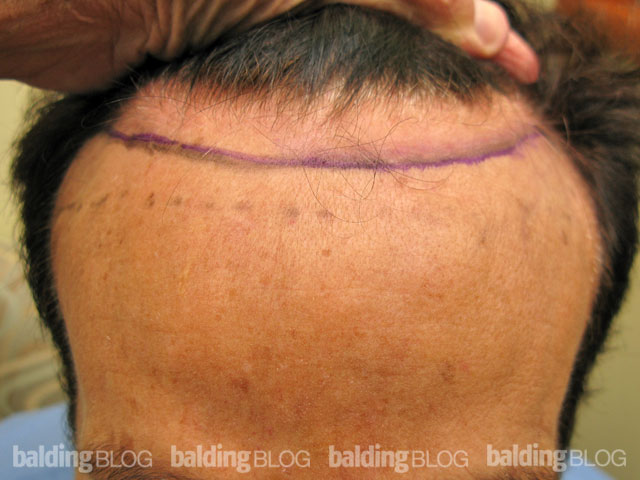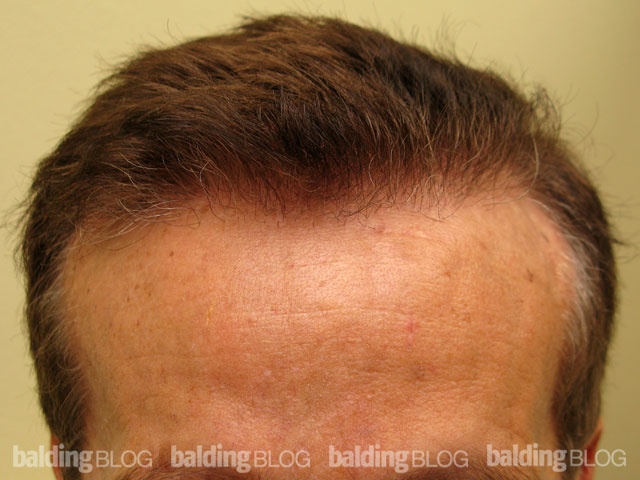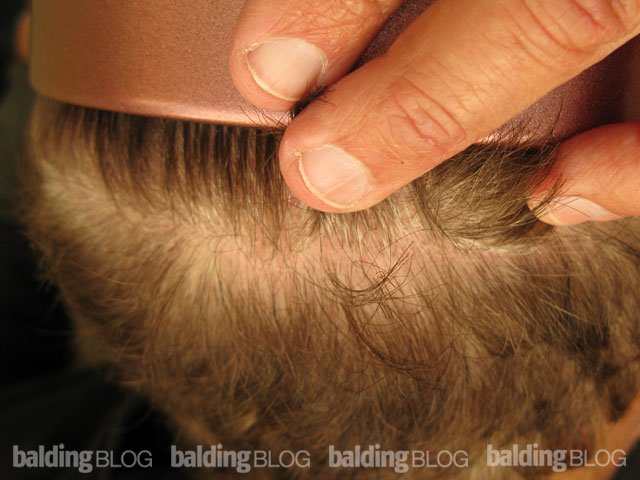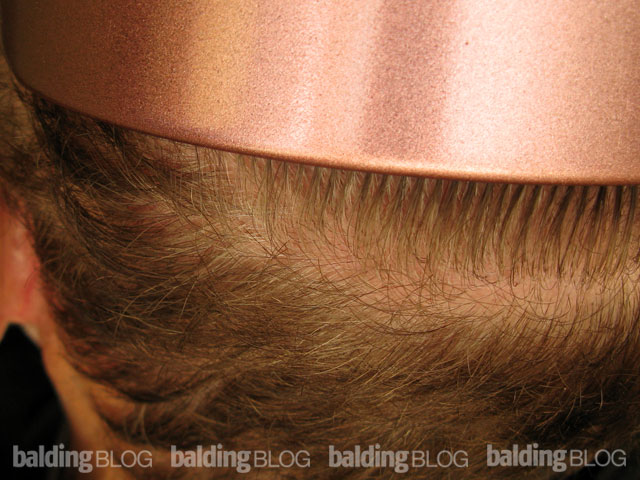I was reading this ‘Understanding Density’ article [PDF file] and it states that thinner ‘see-through’ hair has a density of about 20 cm2. It also says that areas with a pre-op density of 20-25 FU/cm2 could achieve a post-op density of 40-50 FU/cm2.
Then, in the ‘Determining Number of Follicular Units’ article [PDF file] on the same web page, it says that: with a pre-op density of 20 FU/cm2 and a transplant of 20-25 FU/cm2, a post-op density of 40-50 FU/cm2(20-25 FU/cm2 x 100 cm2 area) could be achieved with a total of 2000-2500 grafts.
I’ve had 2 transplants to the frontal half area as shown in the picture in the article, but I still have a ‘see-through’ appearance to some degree. My doctor has confirmed the 20-25 cm2 density was the goal, although it was never made clear to me that was his intention. Anyway, I’m assuming I have about the 20-25 cm2 density and I’d like to have another procedure to increase the density to 40-50 cm2. So, based on all this I’m estimating that I should get 2000-2500 grafts in my next procedure.
My question is: Do you agree with the info presented in these articles and do you think this is an accurate way to calculate how many grafts are needed? Also, are there methods/tools a doctor should be using to check scalp laxity and density to help with determining what can be harvested for another procedure?
Thanks

 A hair density of 30-50% can produce a good look depending upon the coarseness of your hair and the color contrast of your skin and hair color. I have never believed that a hair transplant should bring you to 70% of your original density. The difference between people, based upon color/contrast and the coarseness of the hair, can be dramatic. A return of 50% of the original density in a person with fine hair will have a more see-through look than a return of 25% of the original density if the hair is coarse. So you see how difficult it is for me to understand your situation as the blanks (color/contrast and coarseness) are not filled in for me to include in the assessment.
A hair density of 30-50% can produce a good look depending upon the coarseness of your hair and the color contrast of your skin and hair color. I have never believed that a hair transplant should bring you to 70% of your original density. The difference between people, based upon color/contrast and the coarseness of the hair, can be dramatic. A return of 50% of the original density in a person with fine hair will have a more see-through look than a return of 25% of the original density if the hair is coarse. So you see how difficult it is for me to understand your situation as the blanks (color/contrast and coarseness) are not filled in for me to include in the assessment.
The calculations are easy. The original density in a person with “average” hair density is hair is 2.1 hairs per mm square. That amounts to 1250 hairs per square inch (or 650 follicular units per square inch). You need to know the area we are talking about to do the calculations correctly, yet that is not really the answer as the variables which are not included will dictate the presence of a see-through appearance.

 I’m often outspoken about the
I’m often outspoken about the  Without a
Without a 




 Now, I am not sure if I have completely answered your question, as I believe there may be some misunderstanding. For men most of the hair on the back of the scalp is considered “permanent” hair which will cycle and live on (see the Norwood 7 diagram at right). The hair you see in that diagram is considered the donor hair and this is a basis of hair transplant surgery for men. The research and experience you are asking about is evident on thousands of men who have had hair transplant surgeries. For example, see the
Now, I am not sure if I have completely answered your question, as I believe there may be some misunderstanding. For men most of the hair on the back of the scalp is considered “permanent” hair which will cycle and live on (see the Norwood 7 diagram at right). The hair you see in that diagram is considered the donor hair and this is a basis of hair transplant surgery for men. The research and experience you are asking about is evident on thousands of men who have had hair transplant surgeries. For example, see the